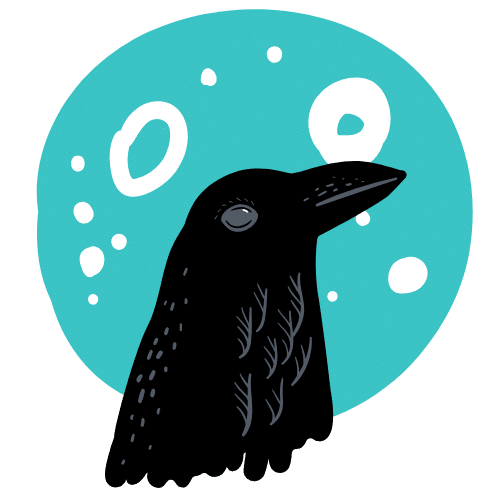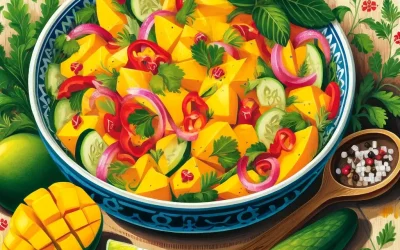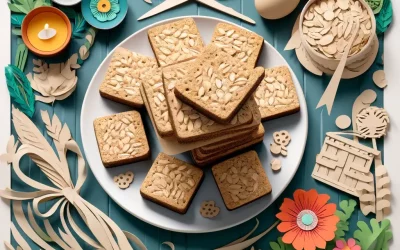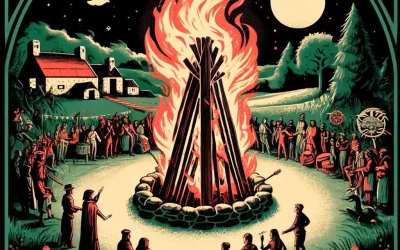LEARN | PAGAN HOLIDAYS | OSTARA
EVERYTHING YOU NEED TO KNOW ABOUT OSTARA
Ostara (oh-STAH-rah): The Dawn of Spring
Updated: March 15, 2024
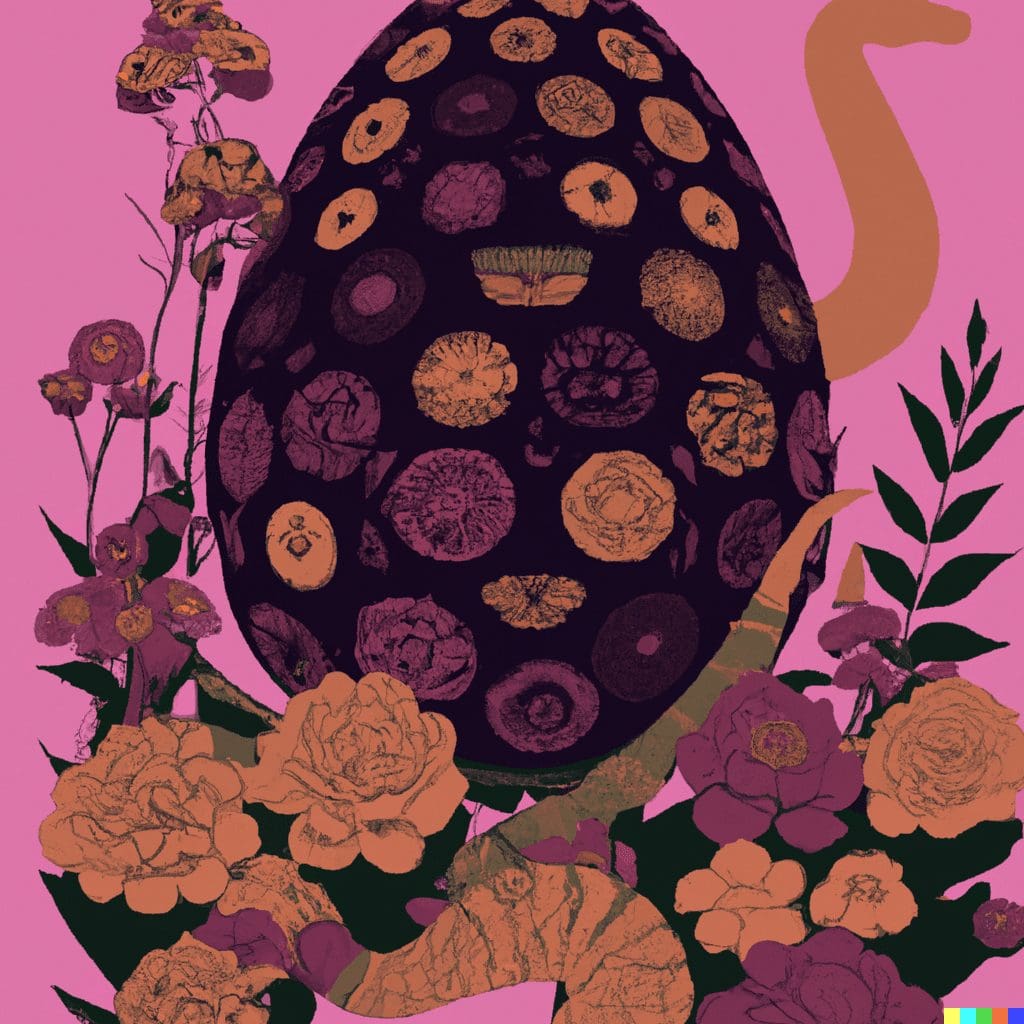
Ostara 2024
When is Ostara?
In 2024, Ostara falls on March 19th. The curtain lifts on Ostara every year around the spring equinox, typically falling between March 19th and 22nd in the Northern Hemisphere. As the universe paints the canvas of the sky with an equal blend of day and night, it’s the perfect time for this celebration of balance and fresh beginnings.
Astrological Insights – Ostara 2024
The morning greets us with the moon in Cancer, nurturing our inner growth. By afternoon, the moon waltzes with the sun in a trine at 2:52 pm (EST), whispering unity and understanding. Soon after, at 3:33 pm (EST), the moon leaps into the vibrant Leo, encouraging bold creativity. As night descends, the sun enters Aries at 11:06 pm(EST), igniting a fire of new beginnings and spirited ventures.
Embracing the Fire: The Arrival of Aries Season
As the sun enters Aries, let its fiery energy kindle your passions and aspirations. Embrace the courage and determination of the ram, fueling your journey of renewal and growth.
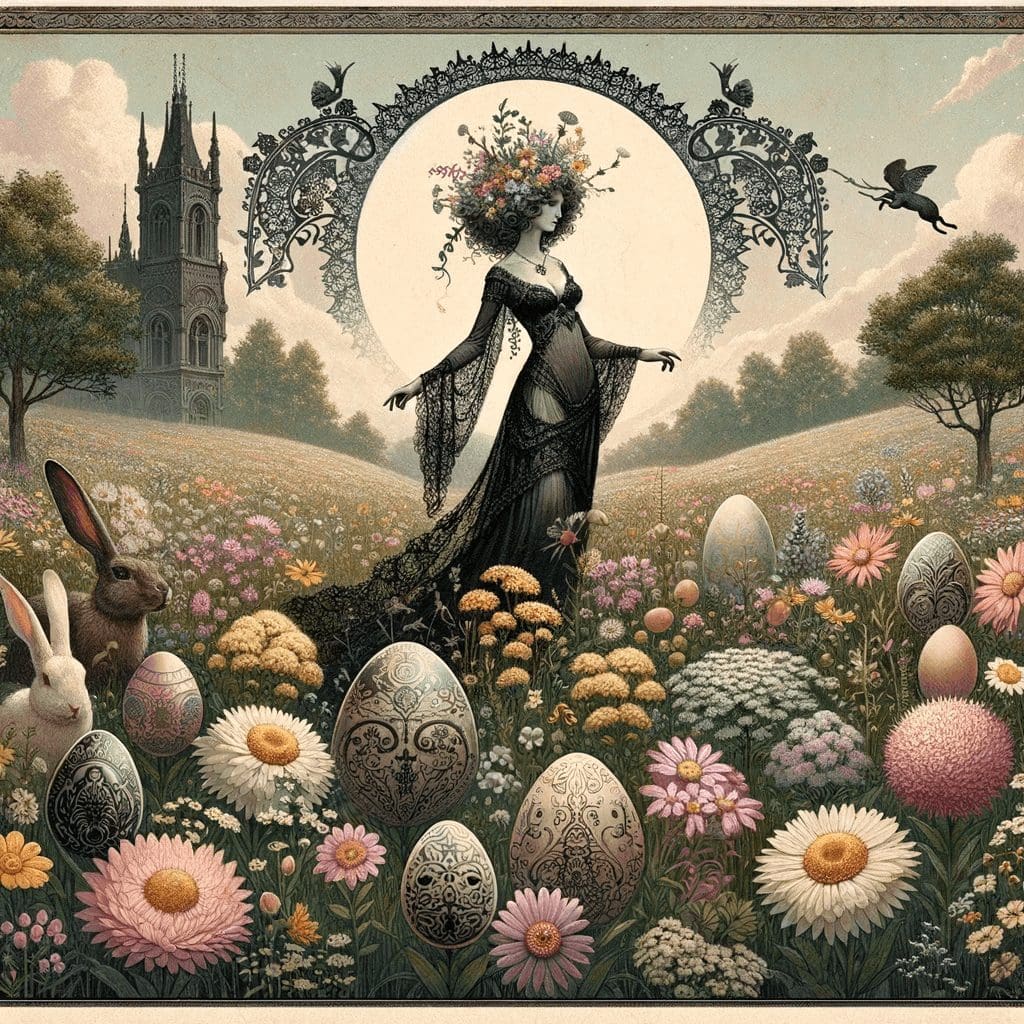
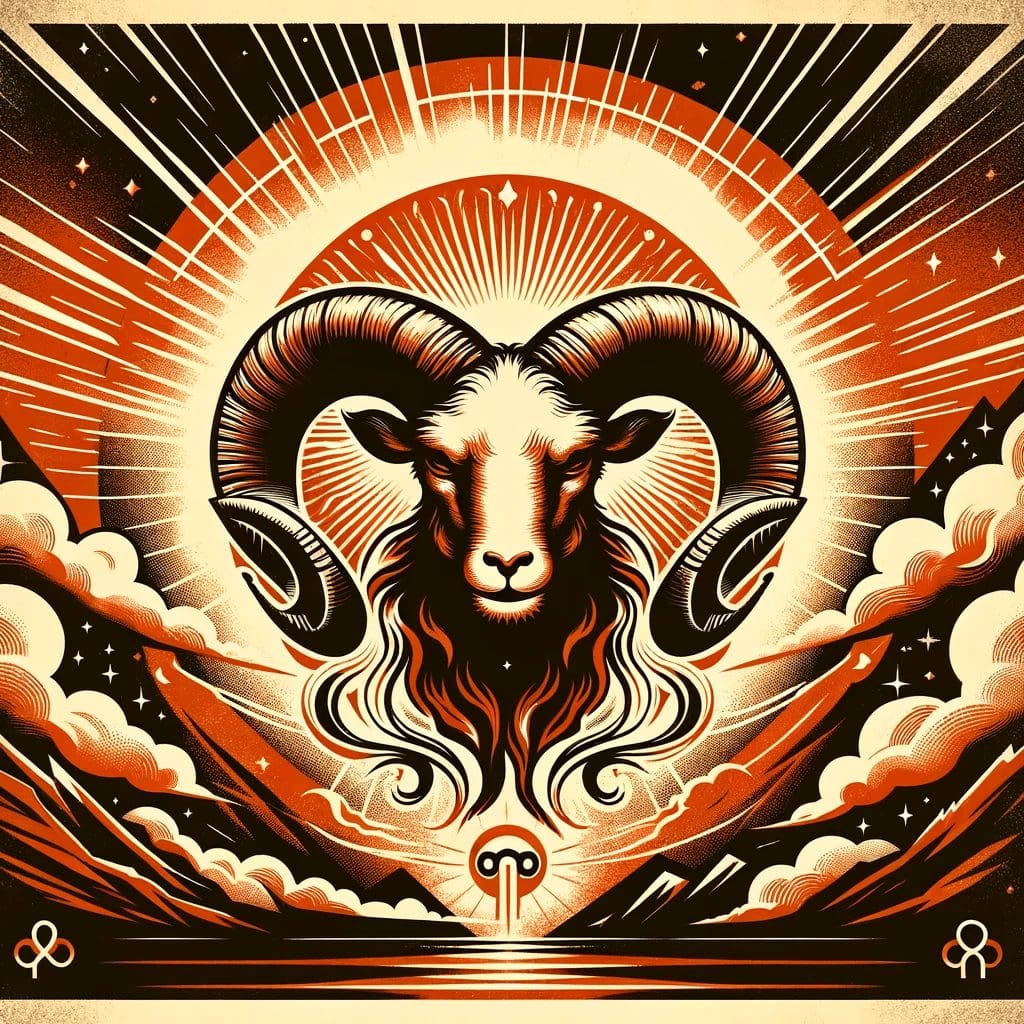
Overview
Welcome, springtime wanderers! Ostara (oh-STAH-rah) is an age-old festival that celebrates the arrival of spring, encapsulating the spirit of rejuvenation, rebirth, and vibrant new growth. It synchronizes with the vernal or spring equinox, a time when the day and night share equal lengths.
What is the Origin of Ostara?
The origin of Ostara, a festival marking the spring equinox, is rooted in Germanic traditions and mythology. Ostara derives its name from Eostre (or Ostara), a goddess associated with spring and possibly dawn, as mentioned by the Venerable Bede, an 8th-century English monk. However, concrete historical evidence for the widespread worship of Eostre is limited, with Bede’s account being one of the few references.
Eostre is believed to have been part of the Old High German and Anglo-Saxon pagan traditions, and her name is linguistically connected to the concept of the east and dawn, suggesting a deity symbolizing new beginnings and the awakening of nature. The month corresponding to April in Old English, “Eosturmonath,” was named after her, indicating a time for festivals and celebrations in her honor.
The Colors, Crystals, Scents, Herbs, Plants, Flowers, and Symbols of Ostara
All of these colors, symbols, herbs, plants, flowers, crystals, and scents are connected to the themes of Ostara, which include renewal, growth, and balance. They help pagans to connect with the energy of the season, celebrate the return of spring, and honor the earth’s awakening.
Colors
- Green: Represents the new growth and renewal of spring.
- Yellow: Symbolizes the sun’s increasing warmth and power.
- Pastels: Soft colors like pink, lavender, and light blue reflect the gentle energy of spring and the blossoming of nature.
Crystals
- Clear quartz: Represents clarity, focus, and the amplification of energy.
- Rose quartz: Symbolizes love, compassion, and emotional healing.
- Moonstone: Represents intuition, balance, and the cycles of life.
Scents
- Jasmine: Represents love, sensuality, and the energy of spring.
- Rose: Symbolizes love, beauty, and the blossoming of nature.
- Lemon: Represents purification, energy, and the power of the sun.
Symbols
- Eggs: Symbolize fertility, new life, and the potential for growth.
- Hares and rabbits: Represent fertility, abundance, and the energy of spring.
- Flowers: Symbolize the blossoming of nature and the earth’s awakening.
Herbs, Plants, and Flowers
- Daffodil: Represents new beginnings, hope, and the arrival of spring.
- Primrose: Symbolizes youth, renewal, and the growth of new life.
- Violets: Represent love, protection, and the magic of spring.
- Tulips: Symbolize love, passion, and the awakening of the earth.
- Hyacinth: Represents rebirth, dedication, and the energy of spring.
What is the Symbolism of Ostara?
Ostara is a riotous symphony of symbolism. With its epicenter on balance and new beginnings, it embodies the dynamic between light and dark, life and death, and winter and spring. Images of budding plants, newborn animals, and the vibrant, waxing sun are woven into the narrative of Ostara, each encapsulating the essence of life’s annual renewal.
What Christian Holiday Replaced Ostara?
Are Easter and Ostara the same thing? No, they are not the same thing. Easter dives into rebirth with roots in Christian and Jewish traditions, marked by eggs and bunnies under the first full moon after the equinox. On the flip side, Ostara, a newcomer, celebrates spring’s renewal without ancient ties. Named for the season’s essence rather than deep history, it’s a modern nod to new beginnings. Both honor spring’s fresh start, each from its unique tradition, spotlighting the season’s revival
Chronicles of Spring: The Ostara-Easter Timeline
Ancient Times (Before 1st Century AD)
Long before recorded history, various cultures around the world celebrated the spring equinox with festivals symbolizing renewal and rebirth. These included traditions that would later influence the celebration of Ostara, marked by activities like egg decorating, a practice with a history stretching back over 60,000 years.
Pagan Origins and Mythical Tales
The festival of Ostara, linked with the Germanic goddess Eostre, is rooted in ancient pagan traditions celebrating spring and fertility. The University of Florida’s Center for Children’s Literature recounts a myth where Eostre transforms a dying bird into a hare that brings rainbow-colored eggs each year. This tale, along with the writings of the 8th-century monk Bede, situates Ostara in a rich pagan heritage, though precise dating before the 1st century AD remains subject to scholarly debate.
Emergence of the Easter Bunny (1500s)
By the 1500s, stories featuring bunny imagery began to surface in Germany, laying the groundwork for the Easter Bunny. The first narrative about a rabbit hiding eggs appeared in the late 17th century. German immigrants carried these traditions to America, where the “Oschter Haws” became a beloved character among the Pennsylvania Dutch, evolving into the modern Easter Bunny.
Christian Adaptation and Syncretism (1st Century AD onwards)
As Christianity wove its way through history, Easter popped up to celebrate Jesus Christ’s big comeback, and guess what? It decided to throw in some classic pagan flair. We’re talking eggs and rabbits, folks—those timeless icons of fertility, fresh starts, and spring fever. Now, enter Ostara, sporting the same spring symbols but without the ancient creds. This mash-up shows how, when it comes to celebrating spring, everyone loves a good symbol of renewal. It’s like Easter raided the pagan symbol closet, and Ostara just couldn’t resist following suit.
Modern Cultural and Commercial Influences
Over time, the celebration of Easter has embraced commercial and cultural aspects, such as the creation of edible Easter bunnies in the 1800s and the integration of egg decoration into mainstream Christian traditions, symbolizing various aspects of life, rebirth, and spiritual beliefs.
Ostara Traditions and Customs
Egg Decorating
Ostara eggs, decorated with symbols and colors of spring, make for a festive (and potentially messy) tradition. Eggs represent the promise of new life, so go wild and let your creativity bloom!
Seed Blessings
It’s a fabulous time to begin planting your garden. Bless your seeds with hope and excitement for the bountiful harvest to come.
Dawn Greetings
Greet the sunrise on Ostara’s morning. Feel the warmth of the strengthening sun as the dawn of the new season arrives.
Ostara Lore
The Hare and the Egg
From German folklore emerges the story of Ostara, the goddess of spring, who turned a bird into a rabbit to help it survive the cold. This magical rabbit, in gratitude, retained its egg-laying ability. Celebrating Ostara, this mythical hare symbolizes rebirth and renewal, laying colorful eggs as a tribute to the goddess. Embrace this enchanting story as we welcome the joys of spring and celebrate Ostara’s festival.
The Ballance of Night and Day
The equinox is a point of balance in the natural world. This day of equal light and darkness symbolizes the harmony of opposites.
The Sun Growing
The sun, symbolizing the divine masculine, grows in power as Ostara approaches, chasing away winter’s icy grip.
Ostara Deities
Dawn and Spring Goddess! 🌼🌞 Eostre, revered in West Germanic lore, is the enchanting goddess of spring and dawn. Her legacy spans from Old English to Old High German, deeply intertwined with Easter’s origins. The only historical account of Eostre comes from Bede, an 8th-century scholar, highlighting ancient April feasts in her honor. This spring, rediscover the roots of Easter and the intriguing mythology of Eostre, a symbol of rebirth and new beginnings.
Traditional Ostara Foods
Food has always played a crucial role in any celebration, and Ostara is no exception. With its roots in agricultural societies, Ostara’s cuisine is fresh, vibrant, and reflective of the season’s bounty. Here are some foods traditionally associated with Ostara:
- Eggs: As potent symbols of fertility and new life, eggs are a staple in Ostara feasts. They can be hard-boiled and dyed with natural food colorings, or used in baking and cooking.
- Seeds: Sunflower seeds, pumpkin seeds, and poppy seeds are often used in celebratory dishes due to their representation of potential growth and abundance.
- Early Spring Greens: Fresh, leafy greens that sprout in early spring, like spinach, kale, and arugula, feature prominently in Ostara meals.
- Honey and Dairy: As symbols of abundance, sweetness, and nourishment, honey and dairy products often find their way into various Ostara dishes.
- Sprouts: Bean sprouts, alfalfa, and other sprouting seeds encapsulate the idea of new growth and are a refreshing addition to Ostara dishes.
- Hot Cross Buns: Traditionally eaten on Good Friday in Christian tradition, these sweet, spiced buns marked with a cross have been adopted by some Ostara celebrants.
- Lamb: In regions where shepherding was common, lamb — a symbol of the arrival of spring — might be included.
- Seasonal Fruits and Vegetables: Depending on the region, fresh fruits and vegetables that come into season in early spring like strawberries, peas, and radishes are celebrated during Ostara.
Remember, the best way to honor Ostara is by using locally-sourced, seasonal foods that reflect the rebirth and fertility of the land around you.
Is Ostara Still Celebrated Today?
Indeed, Ostara still dances on! Many modern pagans celebrate Ostara. It’s a time to embrace the earth’s renewal, revitalize personal growth, and celebrate life and fertility.
The Significance of Ostara
Ostara is more than just a signpost on the turnpike of the seasons. It’s a celebration of balance, a moment of respect for life’s eternal cycle of renewal. Its significance comes from the joy of honoring the world’s rebirth after winter, welcoming the promise of new life and the burgeoning warmth of longer days.
What is the Vernal Equinox?
The term “vernal equinox” is another name for the spring equinox, and it comes from the Latin word “vernal,” which means “pertaining to spring.” The word “vernal” is derived from the Latin “ver,” meaning “spring.” Thus, “vernal equinox” directly translates to “spring equinox.”
In astronomical terms, the equinox occurs when the plane of Earth’s equator passes through the center of the Sun. This event happens twice a year, marking the start of spring and autumn. The spring (or vernal) equinox is the moment in the year when the Sun crosses the celestial equator, moving northward, and results in nearly equal day and night across the entire Earth. This equinox typically occurs around March 20th or 21st in the Northern Hemisphere and signifies the start of the spring season.
The use of “vernal” is more common in scientific and formal contexts, whereas “spring” is more commonly used in everyday language. Both terms refer to the same astronomical event and are used interchangeably.
10 Easy Ways to Celebrate Ostara
Plant Something!
Small or large, herbs or flowers, the act of planting connects you to the essence of the season.
Decorate Eggs
Embrace the mess and color of creation, and fill your home with these vibrant symbols of new life.
Sow Wildflower Seeds
Scatter native wildflower seeds in your garden or community spaces to support local wildlife and connect with the act of growth.
Create an Ostara Altar
Incorporate elements of spring—blossoming flowers, colored eggs, or symbols of fertility.
Go for a Sunrise Walk
Welcome the new day and the new season, feeling the warmth of the sun’s increasing power.
Meditate on Balance
Spend time reflecting on the balance in your life, the harmony of light and dark, winter and spring.
Make a Donation
Spring clean your home and donate unused items to those in need.
Practice Yoga
Emphasize sun salutations to welcome the growing light.
Host a Seed Exchange
Organize a seed swap to share the bounty of your gardens and foster diversity in local green spaces.
Craft Spring Equinox Candles
Make candles infused with scents of orange blossom, jasmine, or other spring flowers to light up the longer days.
Learn About Sabbats
You’ve just stumbled upon your new favorite travel guide through the cosmic calendar, the Wheel of the Year.
Imbolc
February
Ostara
March - Spring Equinox
Beltane
May
Litha
June - Summer Solstice
Lughnasadh
August
Mabon
September - Autumn Equinox
Samhain
October
Yule
December - Winter Solstice
